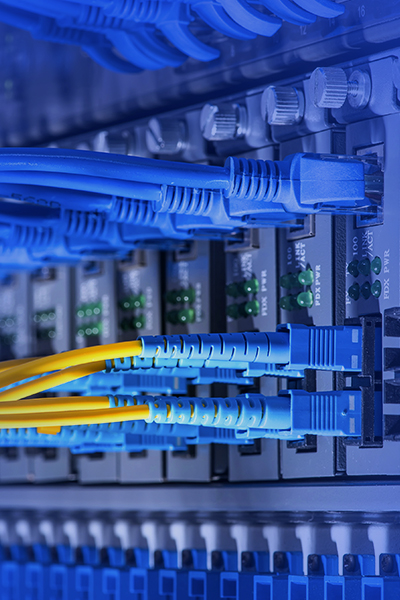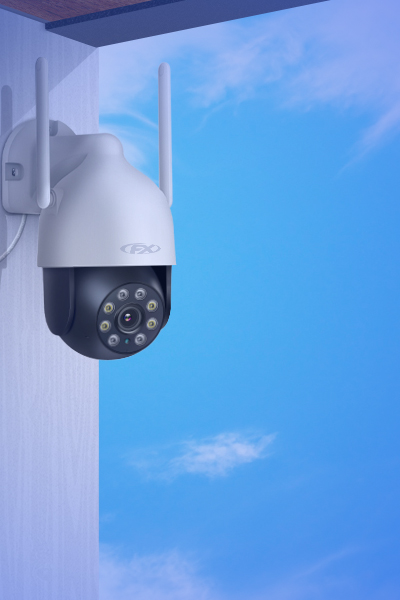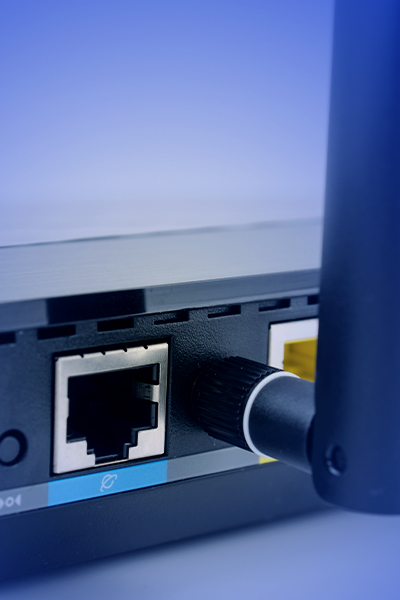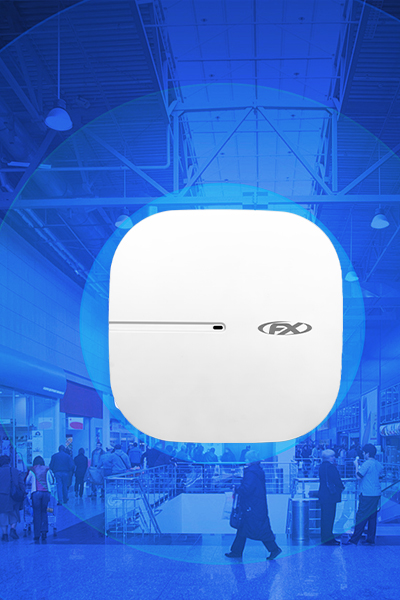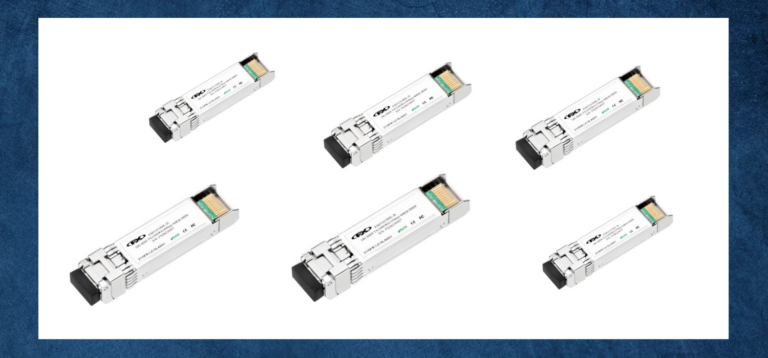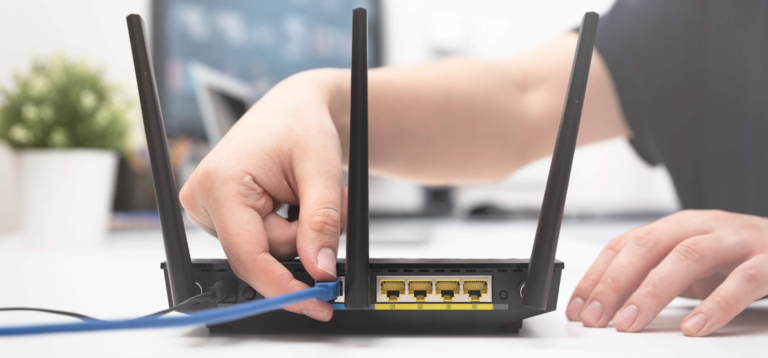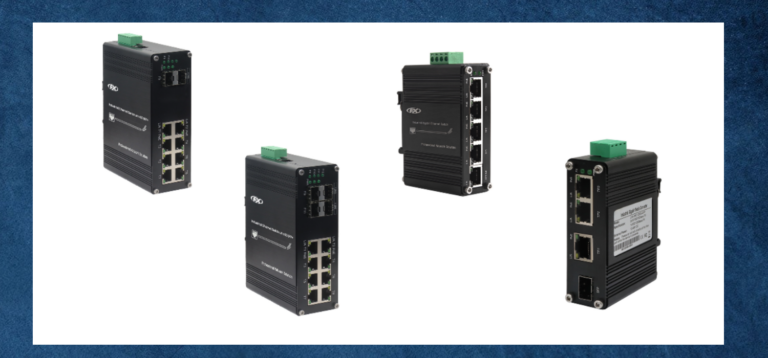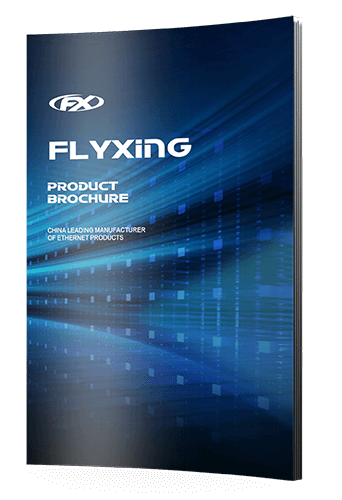In our modern world, fast communication and data transfer are important.
Fiber optic technology is a powerful tool that makes this happen. This guide will explain what fiber optics are and how they work straightforwardly.
What is Fiber Optic and How Does it Work?

Fiber optics, often simply referred to as "fiber," is a technology for transmitting data, including voice, video, and internet communications, by sending light pulses through extremely thin strands of glass or plastic fibers. These fibers are typically about the diameter of a human hair.
Optical Fiber Components
Core
This is the central part of the optical fiber where light travels. It's typically made of glass or plastic and is designed to facilitate the internal reflection of light.
Cladding
Surrounding the core, the cladding is another material layer that helps keep the light within the core by reflecting it into the core through total internal reflection.
Buffer Coating
A protective layer around the cladding, the buffer coating shields the fiber from physical damage and environmental factors.
Jacket
The outermost layer of the optical fiber, the jacket provides further protection and durability, making it suitable for various applications.
Optical Signals
Light as Information
Optical fibers use light to carry information. The variations in light, like its intensity or frequency, represent data.
Modes of Propagation
Light within the fiber can travel through different paths or modes. Single-mode fibers allow only one mode, while multi-mode fibers permit multiple modes of light propagation.
Transmitting and Receiving Data
Light Sources (LEDs and Lasers)
Light sources, such as Light Emitting Diodes (LEDs) and lasers, generate the initial light signals injected into the optical fiber for data transmission.
Lasers are often used for high-speed and long-distance transmission due to their focused and coherent light output.
Photodetectors
At the receiving end of the optical fiber, photodetectors are used to detect incoming light signals. They convert the light variations into electrical signals, which can be further processed to retrieve the transmitted data.
Modulation Techniques
Modulation involves changing the properties of the light signal (like its intensity or frequency) to encode data into it. Modulation techniques enable the conversion of digital data (0s and 1s) into variations in the light signal, allowing data transmission through the optical fiber.
Types of Fiber Optics
Single-Mode Fiber (SMF)
Core Size: The core of single-mode fiber is much smaller, typically around 9 microns (μm) in diameter.
Light Propagation: It allows only a single mode (path) of light to travel through the core, which means that light travels in a straight line without bouncing off the core's walls.
Long-Distance Transmission: Single-mode fiber is ideal for long-distance transmission, making it the preferred choice for telecommunications networks, long-haul internet connections, and data centers.
Narrow Beam: Because of the small core size and single mode, it produces a narrow, focused beam of light.
Multi-Mode Fiber (MMF)
Core Size: Multi-mode fiber has a larger core, typically ranging from 50 to 62.5 microns (μm) in diameter.
Light Propagation: It allows multiple modes (paths) of light to travel through the core. Light can take different paths, bouncing off the core's walls as it travels.
Shorter Distances: Multi-mode fiber suits shorter-distance applications, such as local area networks (LANs), campus networks, and shorter data center connections.
Wider Beam: Due to the larger core size and multiple modes, it produces a wider beam of light, less focused than single-mode fiber.
Advantages of Fiber Optics

Speed and Bandwidth
Fiber optics can transmit data at incredibly high speeds, often measured in gigabits or terabits per second. This high-speed capability is essential for modern applications like high-definition video streaming, online gaming, and cloud computing.
Fiber optics provide a wide bandwidth, meaning they can carry a vast amount of data simultaneously. This bandwidth supports multiple users and devices without a significant decrease in performance.
Reliability
Fiber optic signals experience minimal signal loss over long distances. This reliability makes it ideal for long-haul telecommunications and internet connections.
Fiber optic cables are less susceptible to physical damage, such as electromagnetic interference (EMI) and corrosion, ensuring consistent performance in various environmental conditions.
Security
Fiber optic signals are difficult to intercept, making them inherently more secure than traditional copper-based communications.
Unlike copper cables, which emit electromagnetic signals that can be intercepted, fiber optic signals remain within the cables, reducing the risk of eavesdropping.
Immunity to Interference
Fiber optics are immune to EMI, which can disrupt data transmission in copper-based systems. This immunity ensures a stable and reliable connection, even in areas with high electromagnetic interference.
Fiber optics are also unaffected by RFI, making them suitable for use in environments with radio-frequency interference, such as airports and industrial facilities.
Disadvantages of Fiber Optics

Cost
Fiber optic cables and related equipment can be more expensive to purchase and install than copper counterparts. However, prices have been decreasing over time.
Fragility
Fiber optic cables are more delicate than copper cables and can be easily damaged if bent too sharply or subjected to excessive stress.
Complex Installation
Installing fiber optics can be more complex and time-consuming, requiring specialized tools and expertise. It may also involve additional costs for splicing and termination equipment.
Limited Flexibility
Fiber optic cables are less flexible than copper cables, making them less suitable for applications requiring frequent bending or movement.
Transceiver Costs
The cost of optical transceivers for devices like switches and routers can be higher than the equivalent copper-based equipment.
Availability
Fiber optic infrastructure may not be as widely available as copper networks in certain areas, limiting accessibility.
Applications of Fiber Optics
Telecommunications
Fiber optics are the backbone of modern telecommunications networks. They carry voice, data, and video signals over long distances, facilitating phone calls, video conferencing, and broadband internet services.
Internet Connectivity
Fiber optics provide high-speed internet connections, enabling fast and stable internet access for homes and businesses. Fiber-to-the-home (FTTH) and Fiber-to-the-Premises (FTTP) installations are increasingly popular for delivering high-bandwidth internet.
Medical Imaging
Fiber optics are important in imaging equipment like endoscopes and lasers. They allow for minimally invasive procedures, such as laparoscopic surgeries, by transmitting images and light to and from the surgical site.
Data Centers
Fiber optics are the preferred choice for connecting servers, switches, and storage devices in data centers. They support high-speed data transmission between equipment, ensuring efficient data processing and storage.
Military and Aerospace
Fiber optics are used in military and aerospace applications for their resistance to electromagnetic interference (EMI) and lightweight properties. They are used in communication systems, avionics, and surveillance equipment.
Broadcasting and Entertainment
Television broadcasters and media companies rely on fiber optics to transmit high-definition video and audio signals. This technology ensures clear and uninterrupted live broadcasts and high-quality video streaming services.
Industrial and Manufacturing
Fiber optics find applications in industrial automation and manufacturing for monitoring and controlling processes. They are used in sensors and control systems to measure temperature, pressure, and humidity.
Environmental Monitoring
Fiber optics are used for environmental monitoring, including detecting changes in temperature, pressure, and seismic activity. They are employed in geophysical and oceanographic research.
Underwater Communication
Subsea fiber optic cables enable high-speed communication between underwater vehicles, research stations, and offshore oil platforms. They support internet connectivity and data transfer beneath the ocean's surface.
Transportation and Traffic Management
Fiber optics are used in transportation systems to monitor traffic. They provide real-time data transmission for traffic signals, surveillance cameras, and toll collection.
Types of Fiber Optic Cables

Loose-Tube vs. Tight-Buffered Cables
Loose-tube cables have individual optical fibers placed within protective, water-resistant tubes. They are suitable for outdoor and harsh environments as they protect against moisture and physical damage.
Tight-buffered cables have a thicker protective buffer directly around each optical fiber. They are commonly used in indoor applications and are easier to handle and terminate.
Indoor vs. Outdoor Cables
Indoor fiber optic cables are designed for use within buildings and controlled environments. They may not have the same level of protection against environmental factors as outdoor cables.
Outdoor fiber optic cables are designed to withstand environmental elements such as moisture, UV radiation, and temperature fluctuations. They are used for outdoor installations, including aerial and underground applications.
Armored vs. Non-Armored Cables
Armored fiber optic cables have an additional layer of protection, typically made of metal or a strong material, to enhance their resistance to physical damage. They are used in rugged environments where cables may be exposed to mechanical stress or rodent damage.
Non-armored cables lack the extra protective layer and are used in less demanding environments where physical protection is not a primary concern.
Specialized Fiber Optic Cables
Ribbon Cables
Ribbon cables are designed with multiple fibers laid parallel to each other in a flat ribbon-like structure. They are commonly used in high-density applications like data centers.
Aerial and Underground Cables
These cables are specifically designed for installation above ground (aerial) or buried underground. They have additional protection to withstand environmental conditions.
Other Specialized Cables
There are many other specialized fiber optic cables designed for unique applications, such as underwater cables for submarine communication, plenum-rated cables for use in air handling spaces, and military-grade cables for defense applications.
Fiber Optic Connectors and Termination
Connector Types
SC (Subscriber Connector)
SC connectors are square-shaped and push-pull connectors with a single fiber. They are commonly used in data centers and for various fiber optic applications.
LC (Lucent Connector)
LC connectors are small, modular connectors with a push-pull design. They are often used in high-density installations and are suitable for single-mode and multi-mode fibers.
ST (Straight Tip)
ST connectors have a bayonet-style coupling mechanism often used in older network equipment and installations.
MTP/MPO (Multiple-Fiber Push-On/Pull-Off)
MTP/MPO connectors are designed to handle multiple fibers in a single connector. They are commonly used in high-density applications and data center installations where many fibers must be connected quickly.
Splicing vs. Connectors
Splicing
Fiber optic splicing involves permanently joining two optical fibers to create a continuous optical path.
Splicing is used when a permanent and low-loss connection is required, such as in long-distance telecommunications or undersea cable installations.
Connectors
Connectors provide a removable and temporary way to connect optical fibers. They are more suitable for situations where flexibility and ease of installation are important, such as in data centers or LAN connections.
Fiber Optic Termination Process
Fiber optic termination involves connecting optical fibers to connectors or splicing them together. The steps for termination typically include the following:
- Stripping, cleaning, and cleaving the fiber ends.
- Preparing the connectors or fusion splicing the fibers.
- Accurate alignment of the fiber cores for low-loss connections.
- Attaching connectors or splicing the fibers together.
- Tests like insertion loss and return loss measurements ensure the termination is successful.
Cleaning and Maintenance
- Proper cleaning of fiber optic connectors is crucial to maintain signal quality and prevent contamination. Specialized cleaning tools and solvents are used to clean connectors and mating adapters.
- Regular inspection of connectors and cables using fiber optic inspection microscopes is essential to identify any damage, dirt, or defects.
- Preventive maintenance of fiber optic components helps prevent unexpected failures and ensure optimal performance.
- Protecting fiber optic cables from environmental factors such as moisture, UV radiation, and temperature extremes is important for longevity.
Fiber Optic Testing and Troubleshooting
Importance of Testing
- Testing is essential to verify that the fiber optic installation meets performance specifications and standards. It helps ensure that the network will operate reliably.
- Testing allows for the early detection of problems, such as signal loss or cable damage, before they lead to network downtime or data transmission issues.
- Regular testing helps optimize network performance by identifying and addressing data transmission quality issues.
- Testing is part of routine maintenance to monitor the network's health and detect any deterioration over time.
- Testing results document the network's performance, which can be useful for compliance, troubleshooting, and future expansion.
Types of Fiber Optic Tests
Optical Loss Testing
Purpose: Measures the signal loss (insertion loss) as light travels through the fiber optic link.
Equipment: Optical power meter and a light source (typically at 1310nm or 1550nm).
Use Cases: Used during installation and maintenance to ensure that the signal loss is within acceptable limits.
Reflectometry
Purpose: Detects and locates faults, such as breaks, bends, or splices, in the fiber optic cable by measuring the reflection of light.
Equipment: Optical time-domain reflectometer (OTDR).
Use Cases: Ideal for troubleshooting and identifying the exact location of faults in the cable.
OTDR (Optical Time-Domain Reflectometer)
Purpose: Provides detailed information about the characteristics of the optical fiber, including length, attenuation, and fault locations.
Equipment: Specialized OTDR instrument.
Use Cases: Used for advanced troubleshooting and network characterization, particularly in long-distance or complex networks.
Troubleshooting Common Issues
Signal Loss
Cause: Signal loss can occur due to excessive cable length, poor or dirty connectors.
Solution: Identify the source of signal loss using optical loss testing or OTDR and address it by cleaning connectors, replacing damaged cables, or optimizing the network design.
Cable Damage
Cause: Cable damage can result from physical stress, bending beyond the cable's bend radius, or environmental factors.
Solution: Locate the damage using reflectometry or OTDR and repair or replace the damaged section of the cable.
Connector Issues
Cause: Connector issues may arise from dirty or damaged connectors, misalignment, or improper termination.
Solution: Inspect connectors visually, clean them if needed, ensure proper alignment, and re-terminate connectors if necessary.
Conclusion
Fiber optics is a high-speed technology that uses thin glass or plastic strands to transmit data, voice, and video over long distances. Instead of using electricity like traditional cables, it relies on light.
Connect with us today
let's shape a future of boundless connectivity and extraordinary possibilities. Experience the power of true networking solutions with FlyXing.
Connect with us today!
let's shape a future of boundless connectivity and extraordinary possibilities. Experience the power of true networking solutions with FlyXing.
